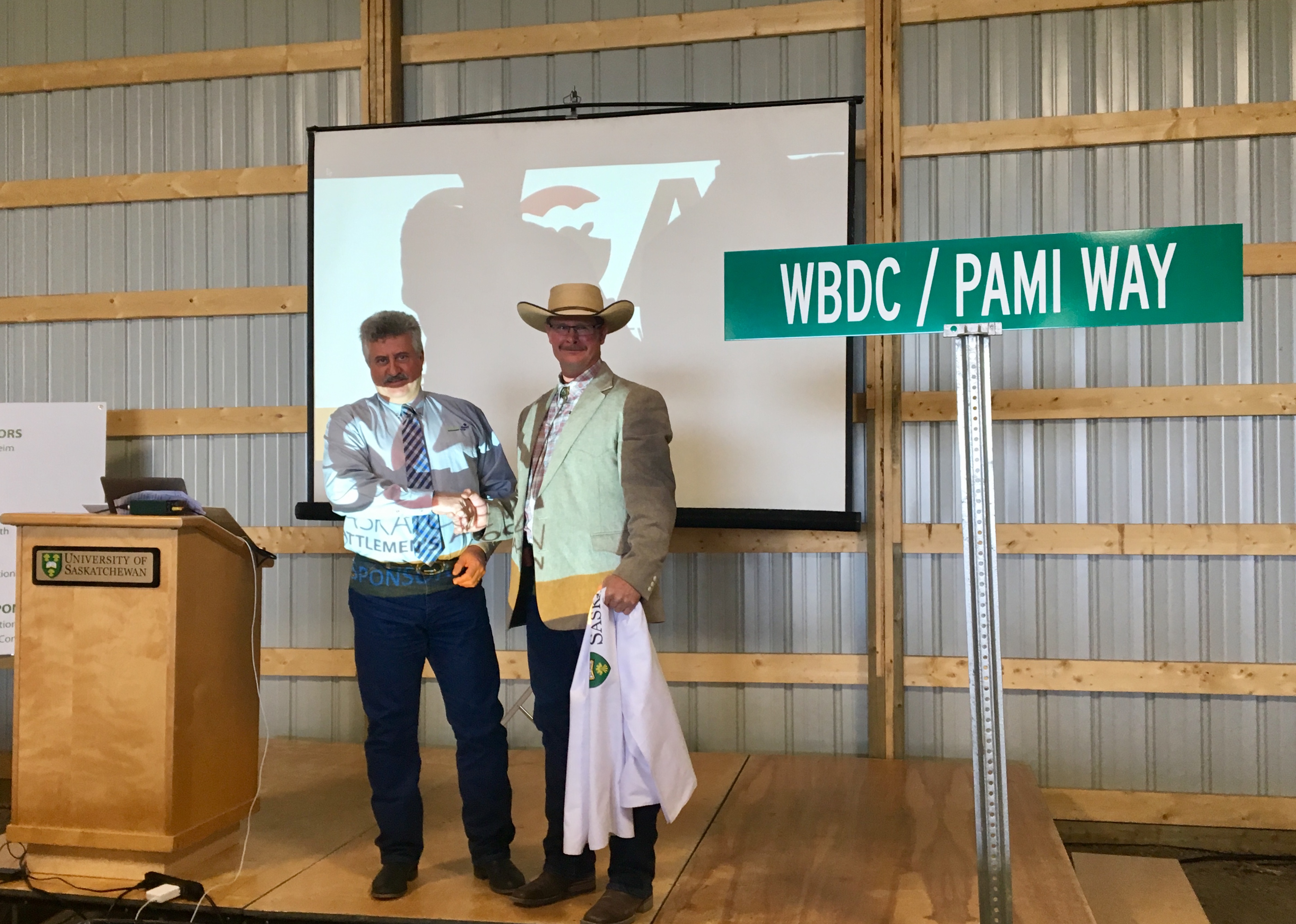
Prairie Agricultural Machinery Institute honoured at the Livestock and Forage Centre of Excellence.
Dave Gullacher has been with Prairie Agricultural Machinery Institute (PAMI) since he was an engineering student at the University of Saskatchewan. Over his 35 years with the company, he has held many roles, including that of CEO for the last 23 years.
By Carlee SnowDave Gullacher (BE’77) is proud to see his alma mater recognize his company by naming a road at the Livestock and Forage Centre of Excellence (LFCE). On June 18, the LFCE will officially unveil WBDC / PAMI Way, a roadway at the research facility named in honour of the two companies that have had such a large impact on both the university and the agriculture industry in Saskatchewan—PAMI and the Western Beef Development Centre (WBDC). For thirteen years, the WBDC had been a division PAMI that provided a link between the research community and the cattle industry. The Western Beef Development Centre moved its facility to the newly opened LFCE on April 1, 2018 and effectively became the Cow-Calf Research and Teaching Unit (FCCRTU). This new partnership with the LFCE helps link all aspects of the beef cattle production chain and facilitate research.
The recognition by the LFCE in the naming of the road is extremely important to Gullacher.
"It recognizes the organization's stewardship," he explains. “Over the thirteen-year partnership between PAMI and the Western Beef Development Centre, the organization passed through one of the greatest challenges of the beef industry. “The producers and industry were under scrutiny from the public, but producers weathered the storm, moving on to a much greater prosperity in the cow-calf and beef industry. To me, it is a wonderful recognition of our stewardship and the responsibility we took for Western Beef.”
Gullacher started his mechanical engineering career with PAMI in the 1970s where he gained experience as a project manager. After three years, he left the company and went into several industry positions in research and development of machinery and vehicles.
Eventually, Gullacher found himself back at PAMI in 1987 with the role of senior technical person, business developer, and eventually CEO in 1996. Gullacher knows better than anyone the impact PAMI has had on the agriculture industry but recognizes that with a new partnership between the company and the LFCE, this is only the beginning.
Gullacher sees a strong future between the two with PAMI supplying the necessary resources for Saskatchewan agriculture to survive in the new digital age. Gullacher explains how the post-Western Beef era for PAMI is focused foremost on machine and systems engineering. PAMI provides strong engineering capabilities that can benefit the industry as the digital revolution reshapes the sector.
“We are retooling and adding significant capabilities that are going to impact the beef industry, the forage industry, and all elements of livestock as well as crop production. We truly see ourselves engaging with LFCE, bringing a strong engineering content to it,” Gullacher explains. PAMI’s introduction to new technologies will improve every sector within the agricultural industry.
Gullacher also recognizes the impact this partnership will have on the agriculture industry. "The hard-working staff of both PAMI and the University of Saskatchewan will blend tremendously and have a lasting contribution to beef research, especially cow-calf. The LFCE will be greatly advantaged because of the history and professionalism those people bring.” This opportunity for all areas of the industry to be coordinated together doing synergistic work gives the LFCE a strong advantage in making the beef industry a solid, sustainable performer going forward.
Perhaps greatest pride Gullacher feels from the recognition is of the number of groups that make PAMI a strong organization. First, the Western Beef staff who conducted over one million days of trial research for the cow-calf sector. This resulted in 200 articles, 50 abstracts, and 80 peer-reviewed articles sent to journals. "They are just tremendous productive staff; I am proud of them, and we miss them too."
Second, Gullacher recognizes the strategic advisory committee that helped guide all that work. The thirteen-person committee was comprised primarily of producers, members of the research community, and government.
“The committee gave excellent guidance. You could just tell the pragmatic, deep scientific knowledge needed to implement the work the producers brought to the table. They wanted to make sure the resources were right for the problem. I just have to say a really big thank you; I am thankful to that advisory committee in the diligence they did in guiding our work.” Lastly, Gullacher recognizes the other stakeholders for the opportunity to be stewards of the organization.
The naming of ‘WBCD / PAMI WAY’ at the LFCE follows the honourific naming of two other roadways last fall. After John Mackinnon, an influential agricultural researcher and USask faculty member is honoured by the naming of ‘MACKINNON WAY’ and the ‘TERMUENDE TRAIL’ is named in honour of the Termuende family’s lasting legacy on agriculture and LFCE itself. These naming’s demonstrate the community and strong bonds formed between the agriculture industry and the University of Saskatchewan.

